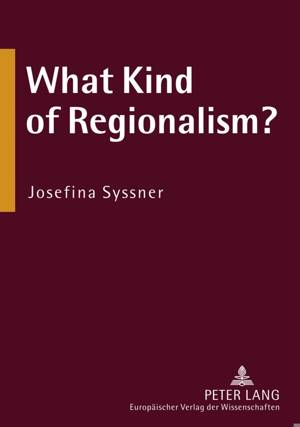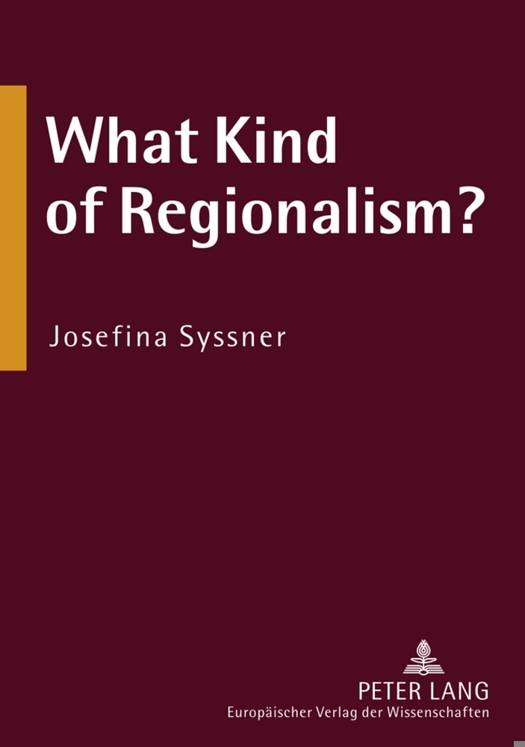
- Afhalen na 1 uur in een winkel met voorraad
- Gratis thuislevering in België vanaf € 30
- Ruim aanbod met 7 miljoen producten
- Afhalen na 1 uur in een winkel met voorraad
- Gratis thuislevering in België vanaf € 30
- Ruim aanbod met 7 miljoen producten
Zoeken
What Kind of Regionalism?
Regionalism and Region Building in Northern European Peripheries
Josefina Syssner
Paperback | Engels
€ 145,95
+ 291 punten
Omschrijving
What Kind of Regionalism? seeks to explore the value basis of regionalism in two northern European regions. By investigating two less favoured, politically defined regions, the author tries to complement previous accounts of regionalism in western Europe, many of which have revolved either around 'ethnic' regions, known for hosting sub-nationalist demands, or around affluent regions in the economic and political centre of Europe. A fundamental assumption in the study is that regionalism can be studied as an instance of a political ideology. The author has compared the political debate in Norrbotten (Sweden) and Mecklenburg-Western Pomerania (Germany) from the mid-1990s up to the present, bringing out the norms, values and demands on which regionalism in these two regions rests. Drawing on extensive empirical material from the two regions, the author seeks to challenge any notion that modern-day forms of regionalism differ from previous ones in an absence of ethno-culturalist elements. The author adopts a critical approach towards treating regional identities, cultures and images primarily as desirable factors for regional economic growth.
Specificaties
Betrokkenen
- Auteur(s):
- Uitgeverij:
Inhoud
- Aantal bladzijden:
- 244
- Taal:
- Engels
Eigenschappen
- Productcode (EAN):
- 9783631552018
- Verschijningsdatum:
- 11/04/2006
- Uitvoering:
- Paperback
- Formaat:
- Trade paperback (VS)
- Afmetingen:
- 148 mm x 210 mm
- Gewicht:
- 299 g

Alleen bij Standaard Boekhandel
+ 291 punten op je klantenkaart van Standaard Boekhandel
Beoordelingen
We publiceren alleen reviews die voldoen aan de voorwaarden voor reviews. Bekijk onze voorwaarden voor reviews.








